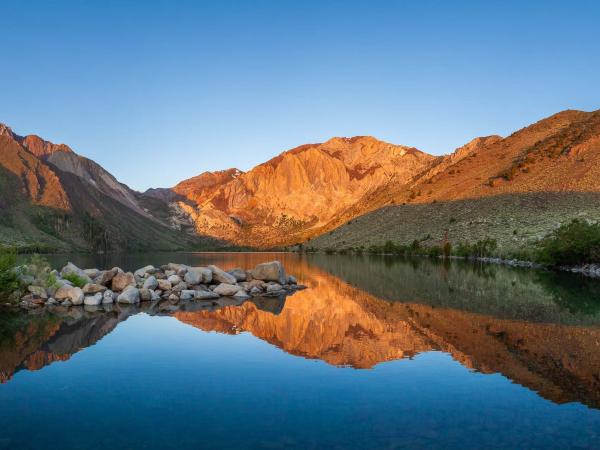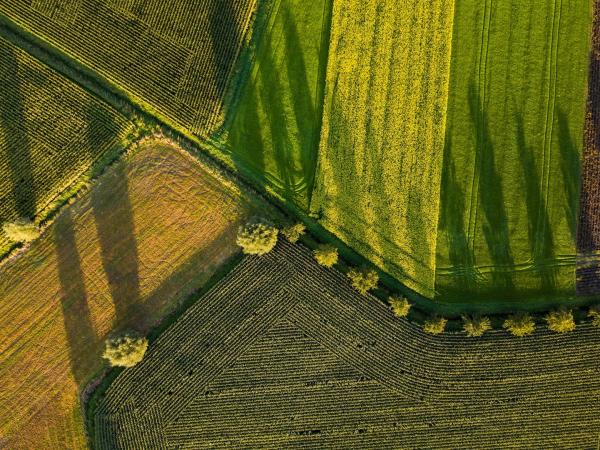
California’s extreme precipitation events caused by intense atmospheric river storms will sharply increase flooding potential and reduce mountain snowfall in the Sierra Nevada, under a warming climate, according to a study by researchers at the UCSB Bren School of Environmental Science & Management and UCLA. This “double whammy” impact from increased precipitation and reduced snowfall could lead to unprecedented flooding which could overwhelm the current capacity of many California reservoirs.
“Climate change is contributing to the acceleration of the global hydrologic cycle with increasing emissions of heat-trapping gases,” says Xingying Huang, a postdoctoral climate researcher at the Bren School and Earth Research Institute. “As a result, precipitation extremes will be more extreme.”
This is due to an uptick in phenomena Californians are familiar with: atmospheric river storms. An atmospheric river is aptly named; they are corridors of enhanced water vapor in the sky, hundreds of miles wide and can carry volumes of water on a scale larger than any river on land. When that water vapor precipitates, it drops several inches of rain within a short period of time. Atmospheric rivers are essential to California’s water supply, contributing up to half of our State’s water. Extreme ones are majorly associated with flooding risks.
The study predicts, however, that precipitation during future heavy atmospheric river storm events will become more extreme. Runoff from the storms could increase by an average of 50%, and could double or more in middle-elevations above 5,000 ft where decreases in snowfall will be the greatest. Huang, with Bren professor Samantha Stevenson and Alex Hall, Director of the Center for Climate Science at UCLA, leveraged data from previous studies and historical rain and snowpack data to simulate atmospheric river events under future climate warming scenarios. The study was recently published in Geophysical Research Letters.
“Extreme atmospheric rivers like the ones we analyzed have the potential to cause a lot of flooding as the precipitation pours quickly,” explains Huang. While more rain for California may sound welcome, there’s a question of whether infrastructure that California currently uses to manage water resources and flood control is prepared for the magnitude of runoff projected in the study.
“Extra water during atmospheric river events could be a good thing for water resources, especially for the much drier eastern Sierra Nevada slopes — if we can catch and store that water,” says Huang. “But that is a big ‘if,’” she adds. While more intense atmospheric rivers could mean bolstering water supplies, it could also result in more flash flooding, debris flows, and landslides.
Nearly all rivers draining from the Sierra Nevada mountain watersheds are impounded by reservoirs, which serve to store water for the drier months of the year. “The capacity of those reservoirs could be exceeded by river water volumes in a way that is unprecedented,” explains Huang. The study suggests that preparing infrastructure for storing water from heavy precipitation will become extremely important for later use during drought periods.
According to the California Department of Water Resources, the state has experienced more than 30 major flood events in the past 60 years, resulting in hundreds of lives lost and billions of dollars in disaster claims. Damage from more extreme storms in California has the potential to be worse than that of hurricanes typically seen on the east coast.
Reduced snowfall in the Sierra Nevadas is the other half of the “double whammy” effect predicted by the study. Less snow means less streamflow supply during dry periods. “It matters whether precipitation falls as snow — which stays stored away in the mountains until it melts in the spring — or as rain, which flows into our reservoirs and flood control channels right away,” Huang says. Heavy snow loss in the future could further jeopardize the future of California’s water supply.
The study is a call to action, says Huang. Additional research is needed to quantify potential flooding control and water resource management strategies. “I am also interested in researching the potential ecologic and economic impacts, and adaptation strategies,” says Huang. Huang and Stevenson hope their research will contribute to assessing the risks associated with future climate extremes, which can help California communities, industries, and public agencies prepare for extreme weather.

View and download this entire infographic. Special thanks to the UCLA Institute of the Environment & Sustainability, UCLA Center for Climate Science. Take a closer look at this topic at ioes.ucla.edu.
Further reading
Future Warming and Intensification of Precipitation Extremes: A “Double Whammy” Leading to Increasing Flood Risk in California, Geophysical Research Letters, 10 Aug 2020
Future Flooding, The UCSB Current
A warming California sets the stage for future floods, UCLA Newsroom



